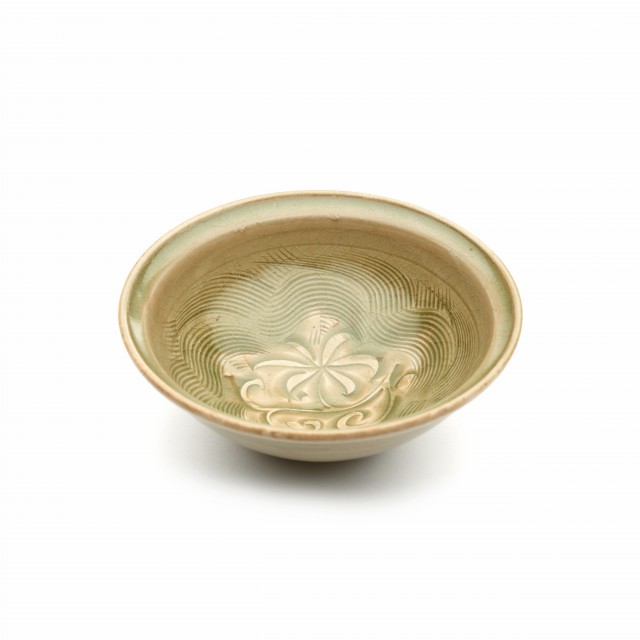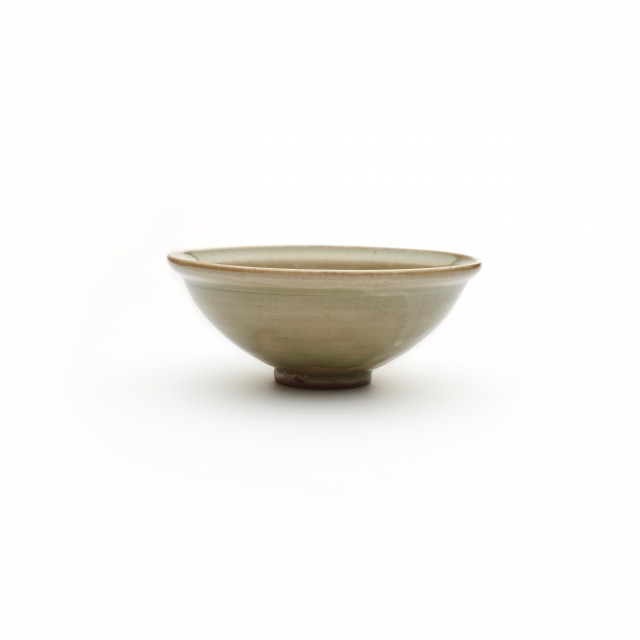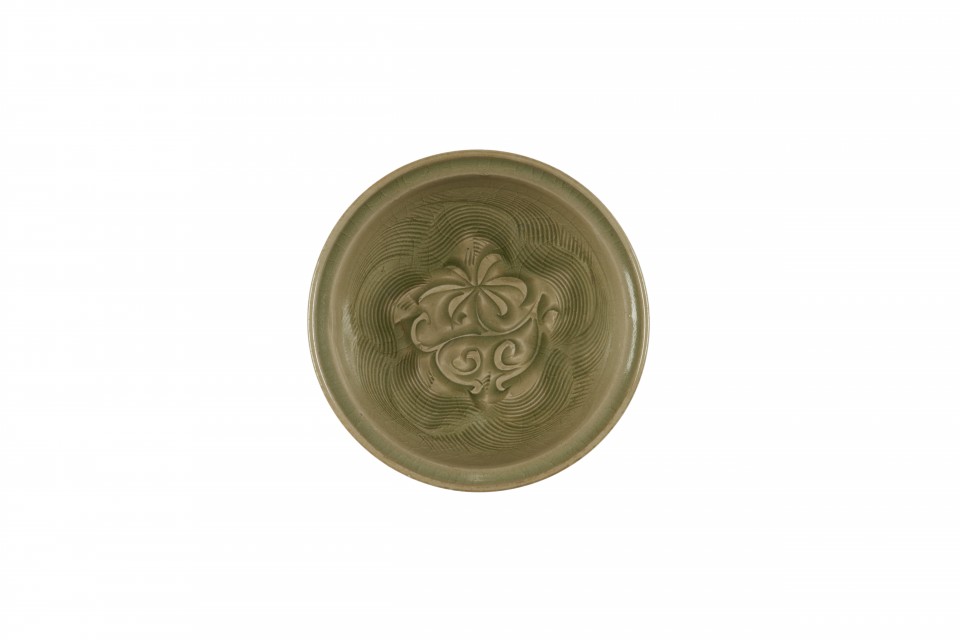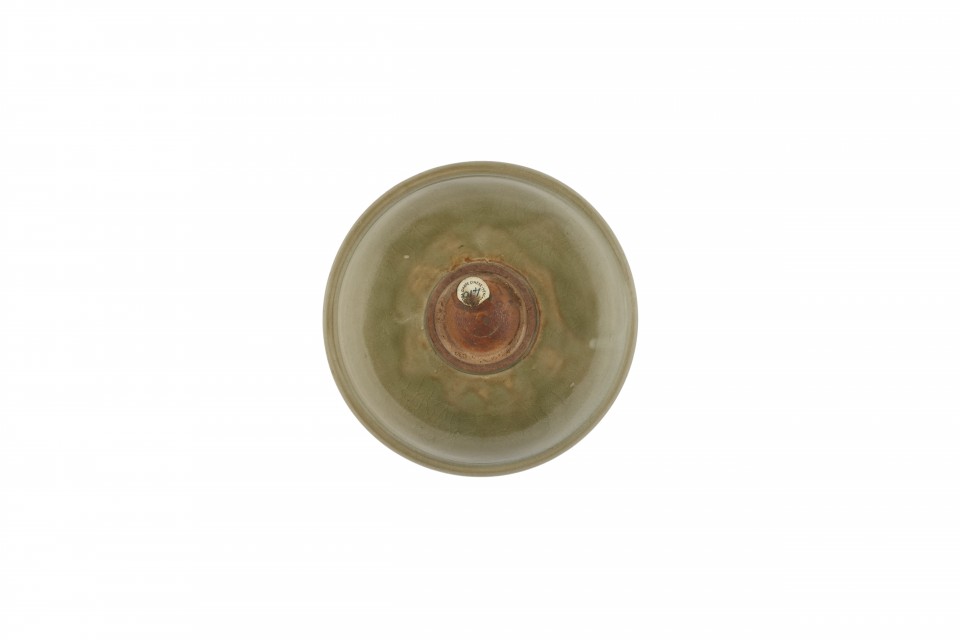Bowl (one of a pair)

Photography by Synthescape, Digital image © Asia Society

Photography by Synthescape, Digital image © Asia Society

Photography by Synthescape, Digital image © Asia Society

Photography by Synthescape, Digital image © Asia Society
Bowl (one of a pair)
Mid-12th century
China, Shaanxi Province
Stoneware with carved and combed design under glaze (Yaozhou ware)
H. 2 1/8 x Diam. 5 3/8 in. (5.4 x 13.7 cm)
Asia Society, New York: Mr. and Mrs. John D. Rockefeller 3rd Collection, 1979.133
Licensing inquiries
This bowl and another in the Asia Society Collection (1979.134) form a pair.The sketchy treatment of the carved lotus blossoms in the interior of these bowls and the reliance on the use of the time-saving comb for the wave design are typical of 12th-century mass production of ceramics, evidenced also by the use of molds at the Ding kilns in Hebei Province. Their glaze is usually classified in the West as "celadon," a name derived from the name of a character in a 17th-century French play who wore a green costume. Green glazes are derived from iron oxides and are relatively easy to produce; they were among the first glazes created in China.




